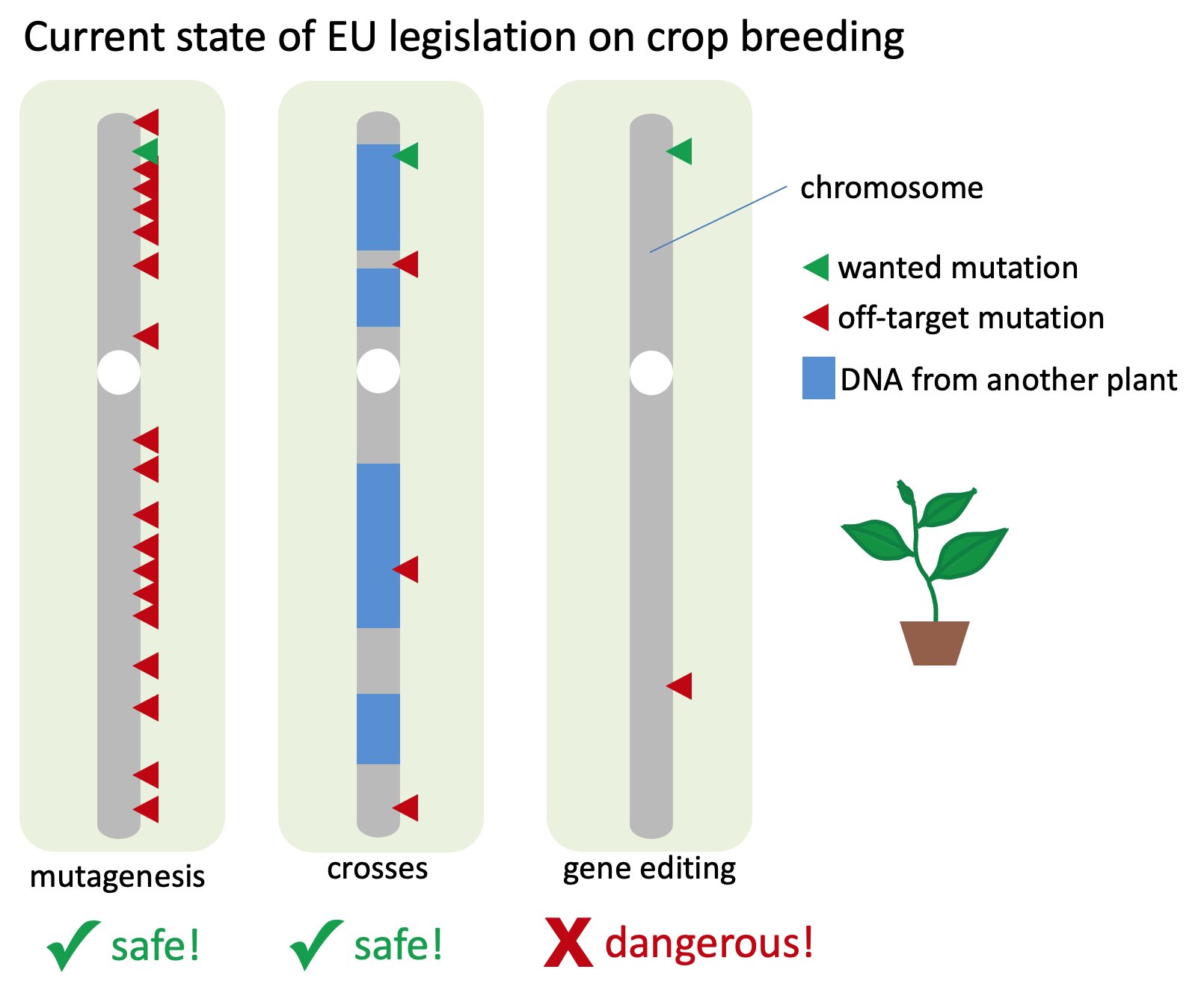this post was submitted on 26 Mar 2024
1 points (100.0% liked)
Europe
8484 readers
1 users here now
News/Interesting Stories/Beautiful Pictures from Europe 🇪🇺
(Current banner: Thunder mountain, Germany, 🇩🇪 ) Feel free to post submissions for banner pictures
Rules
(This list is obviously incomplete, but it will get expanded when necessary)
- Be nice to each other (e.g. No direct insults against each other);
- No racism, antisemitism, dehumanisation of minorities or glorification of National Socialism allowed;
- No posts linking to mis-information funded by foreign states or billionaires.
Also check out [email protected]
founded 1 year ago
MODERATORS
you are viewing a single comment's thread
view the rest of the comments
view the rest of the comments

Basically... The theoretical risk of a mutation occuring that is unwanted. Here is the thing that graphic hides though. With gene editing it's a company that decides what is desired and what is off target. And we all know that big corporate is primarily interested in making more money. Not the well being of the people.
Agreed.
Additionally, the graphic oversimplifies things as well. The resulting genetically modified crop is often not even all that close close to the same as the non-GMO, as seen by studies such as this one:
https://enveurope.springeropen.com/articles/10.1186/s12302-023-00715-6
Basically; GMO soybeans contain proteins which differ and also include additional proteins. This can cause allergic reactions to modified soy where non-modified soy might not cause an issue.
Monsanto supposedly even knew about these proteins and higher risk of allergic reaction and chose to not disclose it. (I saw some research that mentioned this years ago... It'd be hard to find the exact source I read back then.) This specific paper, which talks about additional proteins and side-effects brought in by the new transgenic splicing, also explicitly states that Monsanto did studies themselves and failed to report relevant findings:
https://www.ncbi.nlm.nih.gov/pmc/articles/PMC5236067/
Obviously, other methods can also change proteins too, but these papers show it isn't as clear cut as the graphic in the original post claims.
Along these lines, here's a study that finds differences not just in soybeans grown organically versus ones treated by glyphosate (Monsanto Round-Up pesticide) but also between GMO and non-GMO crops, both treated by the pesticide.
https://www.sciencedirect.com/science/article/pii/S0308814613019201
But, yeah this is just a long way of agreeing with the parent post and saying that the end goal is to make the plants resistant to poison, not to make them better for humans, all to make more money. (In this case, Monsanto is even double-dipping by selling both the pesticide and the crops tailor-made for the pesticide.)
Other GMO crops might be closer to the original crop and might also actually be beneficial for humans without drawbacks. However, Monsanto's soybeans are problematic, and other crops might be as well, especially if they're made by companies who have money as their primary goal.